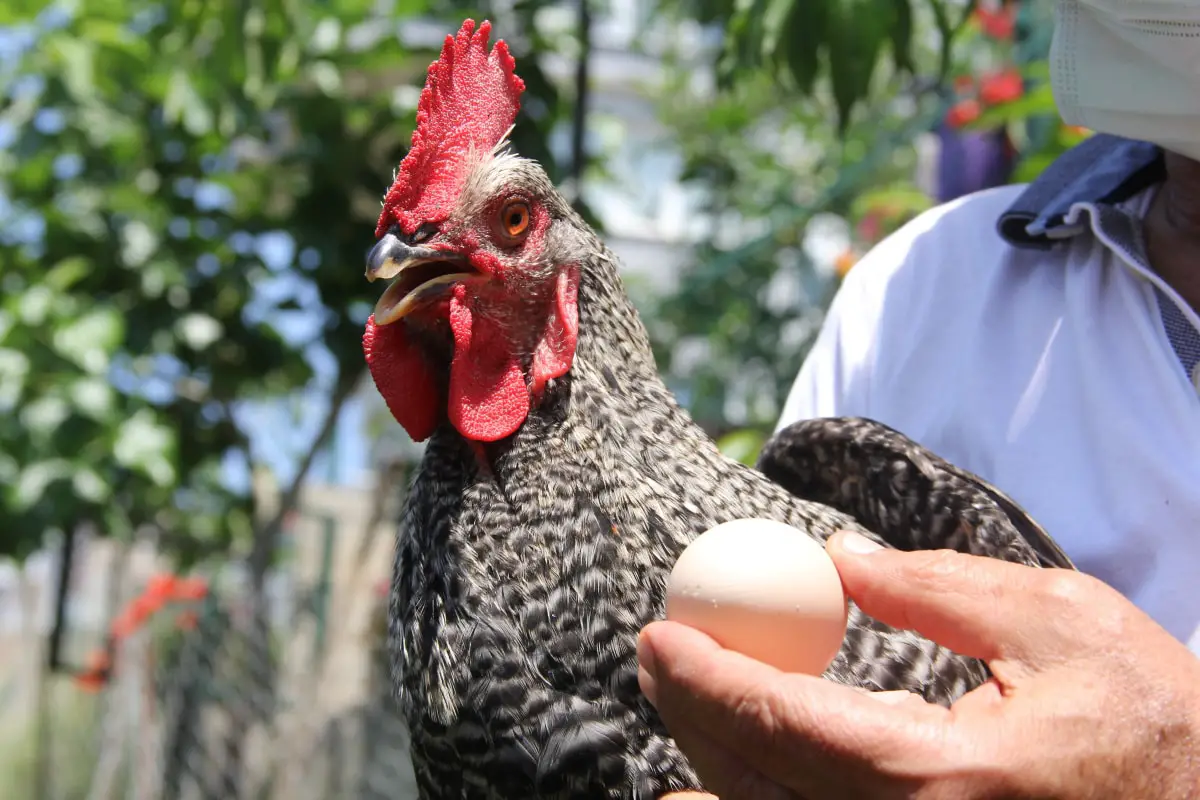If you’re a backyard chicken keeper, you may wonder how to fertilize chicken eggs without a rooster. While roosters are typically essential for natural egg fertilization, there are ways to achieve fertilized eggs without one. In this guide, we’ll explore five methods to help you understand and implement egg fertilization in your flock.
Why Fertilize Eggs?
Fertilized eggs are essential if you plan to hatch chicks. Whether you’re expanding your flock or simply want to experience the miracle of life, knowing how to fertilize eggs without a rooster is a valuable skill for any chicken enthusiast.
Understanding the Basics
Before we dive into the methods, it’s important to understand the basics of egg fertilization. When a rooster mates with a hen, he transfers sperm into her oviduct, where it fertilizes the egg before the shell forms. If there’s no rooster, the eggs laid by the hen will be infertile.
1. Purchase Fertile Eggs
One of the easiest ways to obtain fertilized eggs without a rooster is to purchase them from a reputable breeder. Look for local breeders or online sources that specialize in selling fertile eggs. Ensure that the eggs are fresh and have been stored correctly to maintain their fertility.
2. Artificial Insemination
Artificial insemination is a more advanced method of fertilizing chicken eggs without a rooster. It involves manually collecting sperm from a rooster and inseminating the hen. This method requires specialized knowledge and equipment, so it’s best suited for experienced chicken keepers or those working with a veterinarian.
Here’s a simplified overview of the process:
Step 1: Collect Sperm
A small amount of sperm is collected from a healthy rooster.
Step 2: Inseminate the Hen
Using a syringe or pipette, the collected sperm is gently introduced into the hen’s oviduct.
Step 3: Monitor and Repeat
This process may need to be repeated multiple times to ensure successful fertilization.
3. Temporary Rooster Integration
If you’re not opposed to having a rooster around temporarily, you can introduce one to your flock for a short period. Allow the rooster to mate with the hens, and then remove him once you believe they’ve been fertilized. Keep in mind that this method may not be suitable for everyone, as roosters can be noisy and territorial.
4. Borrow a Rooster
Another option is to borrow a rooster from a fellow chicken keeper when you need fertilization. This approach allows you to avoid the long-term commitment of keeping a rooster while still achieving fertilized eggs.
5. Use a Fertile Egg Preservation Method
If you have access to a rooster only occasionally, you can employ fertile egg preservation methods. Collect eggs and store them in a cool, humidity-controlled environment until you have enough for incubation. This way, you can incubate a batch of eggs when needed.
Key Points to Remember:
- Store the eggs in a cool (50-60°F) and humid (70-80%) environment.
- Turn the eggs daily to prevent the yolks from sticking to the eggshell.
- Use eggs within 7-10 days for the best results.
Conclusion
While a rooster is a natural way to fertilize chicken eggs, there are alternative methods for those who prefer not to keep one. Whether you choose to purchase fertile eggs, explore artificial insemination, temporarily introduce a rooster, borrow one when needed, or use egg preservation techniques, you have options to achieve fertilized eggs without a permanent rooster in your flock.
Remember that each method has its pros and cons, so choose the one that best suits your needs and level of experience. With the right approach, you can enjoy the delights of hatching chicks and expanding your chicken family without the constant presence of a rooster.
FAQs
Here are answers to common questions you might have:
1. What are the benefits of fertilizing eggs without a rooster?
The primary benefit is the ability to hatch chicks without the need for a resident rooster. This allows you to control your flock’s size and avoid potential issues like noise and aggression that can come with keeping a rooster.
2. Can any chicken lay fertile eggs?
No, only hens from breeds capable of laying fertile eggs can do so. Common dual-purpose breeds like Rhode Island Reds, Plymouth Rocks, and Sussex chickens are known for laying fertile eggs.
3. How do I know if an egg is fertile?
Candling is a method to determine if an egg is fertile. Shine a bright light through the egg in a dark room. If you see a network of blood vessels and a dark spot (the embryo) forming, the egg is fertile. If it’s clear or has a small white spot, it’s likely not fertilized.
4. Can I hatch eggs from the grocery store?
Eggs from grocery stores are typically not fertile. Commercial egg production does not involve roosters, so the eggs are collected before fertilization can occur.
5. What’s the success rate of artificial insemination?
The success of artificial insemination depends on various factors, including the skill of the person performing it and the health of the birds involved. It may take several attempts to achieve successful fertilization, and it’s best suited for experienced chicken keepers or professionals.
6. How long should I keep a borrowed rooster with my hens?
A few weeks of rooster presence should be sufficient for fertilization. Monitor your hens for signs of mating (a bare spot on the back of the hen’s head is a sign of successful mating), and then remove the rooster to avoid potential conflicts or over-mating.
7. What is the best way to store fertile eggs for preservation?
To preserve fertile eggs, store them in a cool, humid environment, ideally between 50-60°F (10-15°C) and 70-80% humidity. Turn the eggs daily to prevent the yolks from sticking to the eggshell. Use the eggs within 7-10 days for the best results.
8. Are there any risks involved in borrowing a rooster?
While borrowing a rooster is a temporary solution, there are potential risks, such as introducing diseases to your flock if the borrowed rooster is not healthy. Ensure the borrowed rooster comes from a reputable source and monitor your flock’s health during and after his stay.
9. Can I combine multiple methods to ensure fertilization?
Yes, you can combine methods to increase the chances of fertilization. For instance, you can use a borrowed rooster for a few weeks and collect fertile eggs during that time. Then, store and incubate them later when you need to hatch chicks






